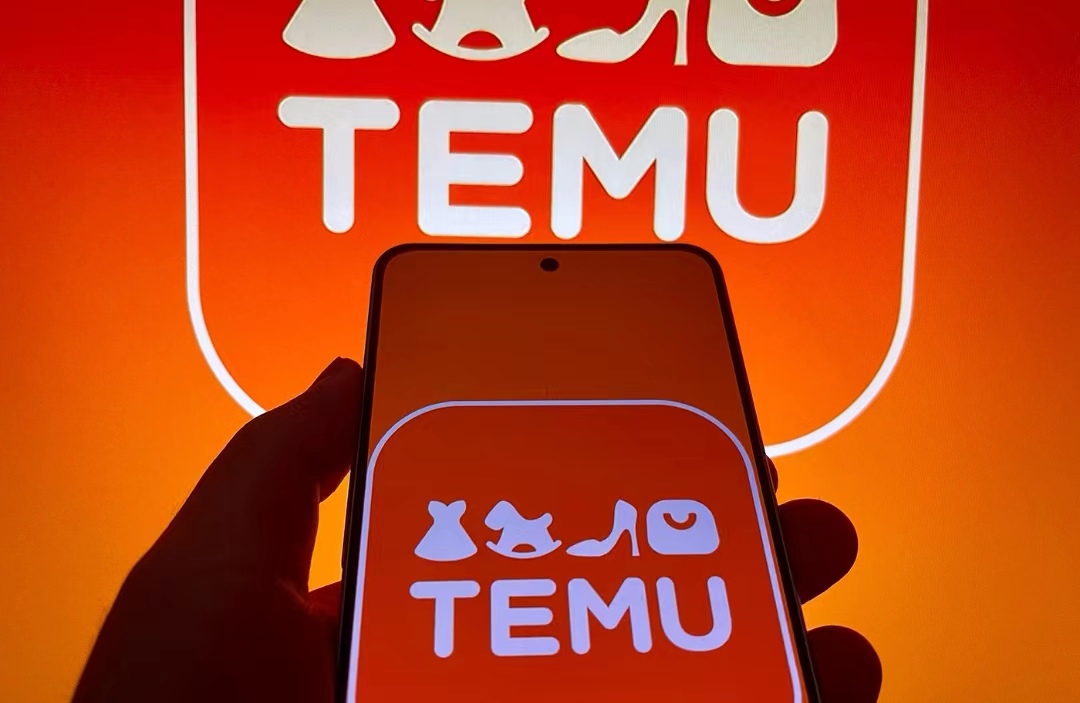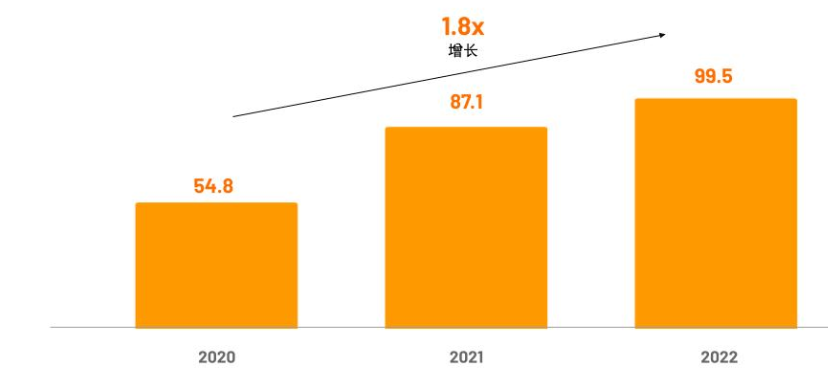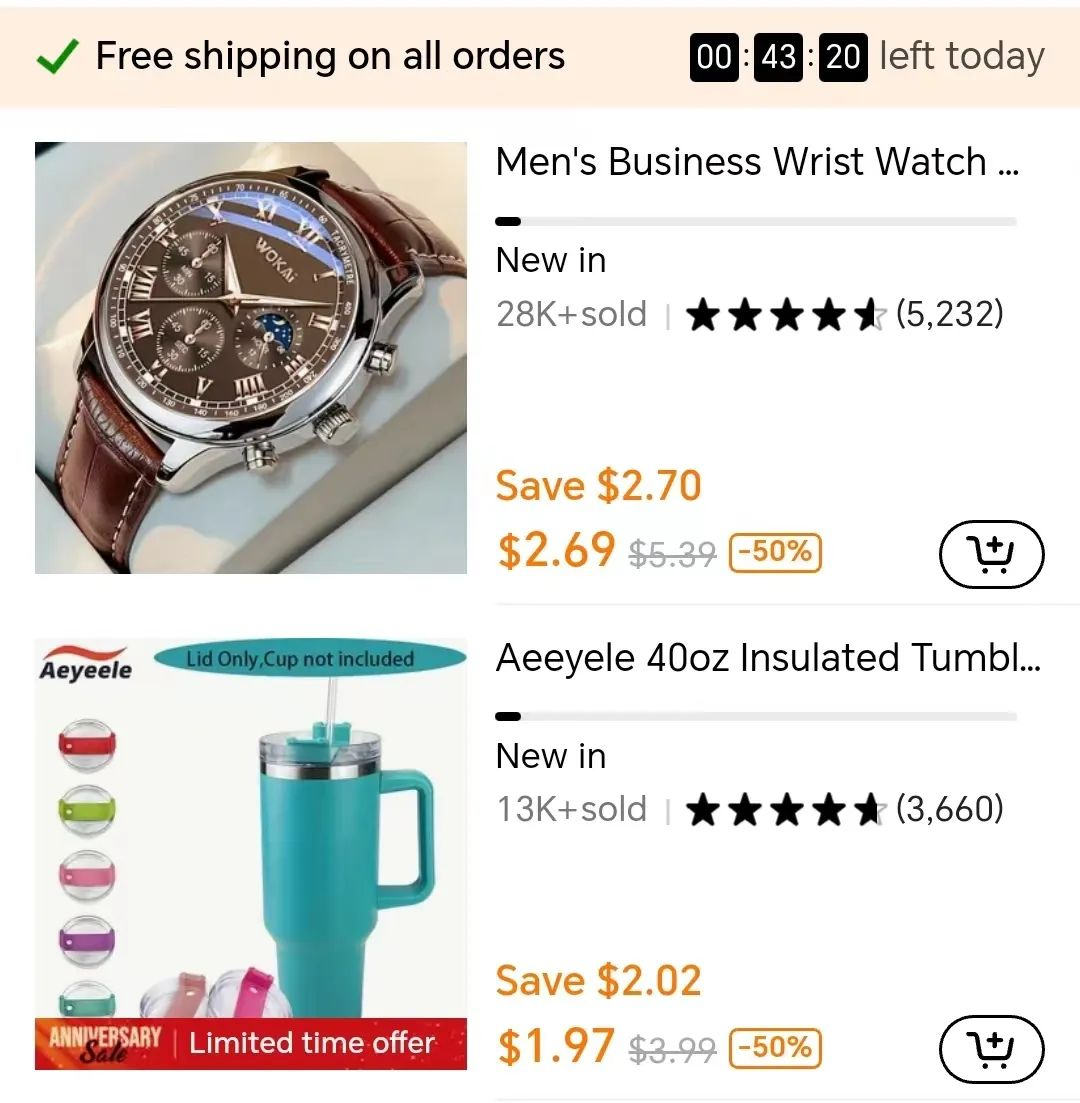{{!completeInfo?'请完善个人信息':''}}
精准高效领先的融资对接服务


One year after its launch, Temu, the overseas version of Pinduoduo, has taken the "bargain knife" from China to the broader international market.


One year after its launch, Temu, the overseas version of Pinduoduo, has taken the "bargain knife" from China to the broader international market. With its affordable prices and aggressive advertising campaigns, it has adopted the viral marketing strategy familiar to Chinese Pinduoduo users. However, for the international market, this straightforward approach to customer acquisition is both novel and highly impactful.
Having achieved success in China by pioneering the "bargain" model, Temu is now trying to replicate its success abroad. Following in the footsteps of JJ'S House and VOVA, Temu has become the latest card played by Pinduoduo in the international expansion game. Nevertheless, the cross-border e-commerce landscape is already crowded, with giants like Alibaba's AliExpress, Lazada, Shein, and others staking their claims. Additionally, platforms like TikTok Shop, backed by extensive user bases, are also vying for a piece of the cross-border e-commerce pie. In this competitive environment, can Temu find a unique path to success?
Part 1: Temu Expands to Over 40 Countries and Regions in One Year
In September 2022, Temu made its debut in North America, embracing the strategy of "Team up, Price Down." Temu's entry into the international e-commerce arena introduced a new era of affordability.

After launching in North America, Temu quickly became a popular app among online shoppers, dominating the charts on platforms such as the App Store and Google Play.
According to extensive data, Temu's U.S. version held the top spot on the App Store for 11 consecutive days, while the UK version remained at the top for 6 days. On Google Play, the U.S. version maintained its position for 37 days, and the UK version for 62 days.
In terms of expanding its presence, since its launch in September of last year, Temu has entered 40 countries and regions. After establishing its North American site, Temu expanded to countries like Canada, Australia, the UK, and Japan. In August of this year, the opening of the Philippines site marked Temu's official entry into Southeast Asia.
Backed by its well-funded parent company, Pinduoduo, Temu has been generous in subsidizing users. For its debut in North America, Temu followed Pinduoduo's strategy of aggressively spending on advertising to gain attention. Temu secured advertising slots during the Super Bowl, one of the top sporting events in the U.S., twice. It also launched extensive advertising campaigns on platforms such as Facebook, Instagram, and Snapchat.

In terms of viral marketing, Temu carried over the "Price Cut" strategy, a time-tested method from its parent company Pinduoduo, to the overseas market. Similar to the way it works in China, Temu offers users the opportunity to earn a $100 cash withdrawal by "cutting" prices. Of course, this is based on the condition that you bring in new users to join the platform.

The more familiar pages show that users can buy everyday necessities, including daily necessities, footwear, and bags, for less than $1, a strategy eerily reminiscent of Pinduoduo's early tactics.
Overseas media describe Temu's pricing as "outrageous" because "you can buy a USB data cable on Amazon for $10 to $20, but on Temu, it only costs $1 to $2." This "bone-breaking" level of discount impacts price-sensitive consumers and directly influences their purchasing choices.
Underneath the frenzy of marketing, Temu has achieved remarkable results. In May of this year, Temu's downloads in the United States surpassed 100 million, and its user base even exceeded that of the established cross-border e-commerce brand Shein.
In July of this year, GWS, an analytics company, released data on the traffic of major e-commerce platforms in the United States. It showed that Amazon's daily active users have significantly declined since April, from 54 million to 46 million, while the "latecomer" Temu's daily active users have grown to 17 million, making it the second-largest shopping app in the United States.
Temu's rapid rise seems to replicate Pinduoduo's success, but is the road carved out by "Price Cuts" really that smooth? Things aren't that simple.
Part 2: Expanding into Southeast Asia – Can Temu's Cash-Powered Strategy Continue to Thrive?
After sweeping through countries in Europe and North America, Temu set its sights on Southeast Asia. In August of this year, it launched its platform in the Philippines, followed by the opening of its Malaysia site in September.
Compared to the saturated domestic e-commerce market, the steadily growing North American e-commerce market, and the emerging African market, the e-commerce business in Southeast Asia is currently experiencing rapid expansion.
According to data from Momentum Works, Southeast Asian e-commerce GMV (Gross Merchandise Volume) grew by 1.8 times in 2022, reaching $99.5 billion. It is projected that Southeast Asian e-commerce GMV will reach $175 billion by 2028.

However, in recent times, the Southeast Asian e-commerce giant, Indonesia, has tightened its operational requirements for e-commerce platforms. The Indonesian Minister of Trade has stated that Indonesia will restrict the online sale of imported goods priced below $100, and imported goods will also be required to obtain supplementary permits. This has compelled Temu, which relies on low prices, to slow down its expansion into Indonesia and redirect its efforts towards the equally promising markets of the Philippines and Malaysia.
The Philippines, as the second most populous country in Southeast Asia, has a median age distribution of just 25.7 years, the lowest among the six Southeast Asian nations. It ranks third in terms of market share in the Southeast Asian e-commerce market. Malaysia, on the other hand, is expected to see its e-commerce market size reach $19 billion by 2025, with over 26 million internet users and a nearly 80% internet penetration rate.
For Temu, the Southeast Asian cross-border e-commerce market represents a tantalizing opportunity. However, the challenge lies in how to compete with well-established giants who have been steadily building their presence.
Temu has entered the Southeast Asian market with competitive pricing. In the Philippines, most products on Temu are priced between 50 to 1,500 pesos (approximately 6.4 to 192 RMB), highlighting its price advantage.
In Malaysia, Temu offers open discounts and promotions, including free shipping and discounts of up to 90%. On September 11th, Temu even ran a free shipping promotion for new users, where orders placed before 11:59 PM on September 11th received free delivery service, subject to a minimum order value of RM45 (approximately 70 RMB) per order.

Having entered the Southeast Asian market for less than a month, Temu's official performance data has not been disclosed yet. After shifting its focus to the Philippines, the product pages with higher sales volume mainly feature reviews highlighting its "affordable prices." However, it remains to be seen how Temu's financial capabilities will fare when pitted against well-established e-commerce platforms like Shopee and Lazada, which have been steadily building their presence over the years. Further observation is required to determine how Temu's strategy will pan out in this competitive landscape.
Part 3: Perfectly Replicating Pinduoduo's Strategy – Temu's Prospects and Concerns
Relying on a low-cost approach to expand globally, while seemingly straightforward, has undeniably yielded impressive initial results for Temu, particularly in the North American market.
On the App Store platform, Temu boasts a 4.6-star rating, with user reviews predominantly praising its affordability. One user review encapsulated this sentiment with the statement, "Even if one item isn't great, you won't lose out because it's just too cheap." This highlights how some users are willing to tolerate potential variations in product quality due to the incredibly low prices offered by Temu.

However, Temu's product reviews still include complaints about quality. For example, a watch priced at just $8.09 received comments like "not waterproof," "poor quality," and "does not match the picture." Similar to Pinduoduo's early development, finding the right balance between quality and pricing remains a challenge.
The "referral-based" marketing approach has also faced criticism from users abroad, with some labeling it as "false advertising." Users have expressed frustration with Temu's referral system, where inviting new users is only counted as successful if they download the app via your link. Many users feel it's a waste of time.
Overseas users, like their Chinese counterparts, have also raised concerns about Temu's "discount" strategies, drawing parallels to the challenges Pinduoduo faced during its early days. Under the pressure of acquiring new users, Temu has already experienced some backlash from this strategy.
The issues don't stop there. In terms of business operations, Temu differs from traditional cross-border e-commerce platforms, where merchants operate their own stores. In Temu's fully managed model, merchants only need to send their prepared goods to Temu's designated warehouse in China, while online operations are handled by Temu. This reduces the burden on companies running their own stores but gives more operational control to Temu.
While this may seem like a time-saving and hassle-free model, communication with some merchants has revealed that stocking goods in a designated domestic warehouse can lead to inventory problems if the products don't sell well. Clearing out the backlog of goods becomes a challenge, affecting both costs and profits.
The fully managed model is a double-edged sword, testing both merchants and the platform.
Another issue lies in the logistics and fulfillment challenges. It is understood that Temu's delivery times in the United States generally range from 5 to 20 days, while local e-commerce platforms in the United States can typically deliver within 3 to 5 days. Most Temu users in the United States receive their orders within two weeks, with a small percentage receiving them within 5 days. However, this is based on the premise of domestic delivery within the United States.
Although Temu has established partnerships with mainstream logistics companies in the United States, the fact that most of its products are first shipped from domestic warehouses to foreign ones before reaching consumers directly extends the product delivery cycle due to additional intermediate logistics steps.
Part4: conclusion
Pinduoduo's success has served as a template for Temu's aspirations. Replicating Pinduoduo's success is not an impossible feat for Temu. The cross-border e-commerce industry has evolved over the years, and while established e-commerce giants have amassed significant experience, consumer habits have also changed with the emergence and development of new internet products. From traditional e-commerce to social commerce, user demands remain the same, but the methods and channels continue to evolve. Discovering new demands within these new formats and adapting to changing user behaviors are the challenges that every e-commerce platform must face.
Temu's entry into the market with its focus on affordability has aligned with the shifting consumer preferences of price-sensitive shoppers in the post-pandemic era. However, in terms of its product offerings, Temu must not only draw lessons from Pinduoduo's experiences but also address its own shortcomings. The road to international success for Temu requires both speed and stability.
·END·
文章作者:Sailing Global
版权申明:文章来源于Sailing Global。该文观点仅代表作者本人,扬帆出海平台仅提供信息存储空间服务,不代表扬帆出海官方立场。因本文所引起的纠纷和损失扬帆出海均不承担侵权行为的连带责任,如若转载请联系原文作者。 更多资讯关注扬帆出海官网:https://www.yfchuhai.com/

{{likeNum}}
好文章,需要你的鼓励
 已关注
已关注
 关注
关注

微信号:yfch24



微信号:yfch24
小程序


公众号

社群















